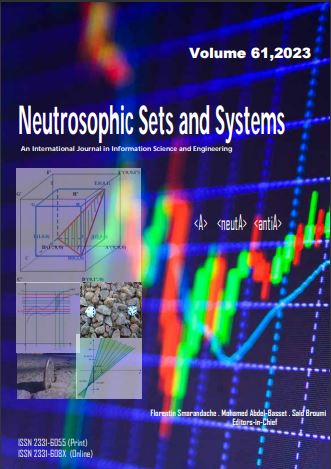A Novel Classroom Teaching Evaluation Method for Assessing Learning Effectiveness Based on Machine Vision and Neutrosophic Sets
Keywords:
learning effectiveness evaluation, neutrosophic sets, machine vision, evaluation based on distance from average solution, multi-criteria decision-makingAbstract
With the development of intelligent technology, machine vision is gradually applied to classroom teaching. Considering the uncertainty of students' class status, the application of neutrosophic sets provides a novel way for classroom evaluation. In this context, this study proposes a novel classroom teaching evaluation method based on machine vision and neutrosophic sets to better evaluate students' learning effectiveness. The main innovation of this study is to construct a temporal neutrosophic evaluation model that considers students' concentration. Specifically, machine vision technology first is used to detect students' status so as to construct temporal neutrosophic evaluation matrices on students' class status. Thereafter, this study proposes a novel time weight function considering students' concentration based on the Pearson correlation coefficient. Then, this study introduces evaluation based on distance from average solution to address multi-criteria decision-making issues. Finally, the validity and feasibility of the proposed evaluation model are illustrated through a case study and comparative analyses. The results indicate that the ranking of the proposed method is 1 3 4 2 , which is consistent with comparative analyses. The aforementioned study further validates the practical value and provides valuable insights for teaching evaluation methods.
Downloads
Downloads
Published
Issue
Section
License
Copyright (c) 2023 Neutrosophic Sets and Systems

This work is licensed under a Creative Commons Attribution-NonCommercial-ShareAlike 4.0 International License.








